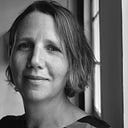As creative people, we’re often told we think outside the box, that we’re lateral and openminded, and messy. And it’s true that we do need to think of the less obvious solutions and paths. That we need to be lateral, and often we’re messy.
But when I’m making a podcast, I find the easiest way to keep track of what I’m doing is to make boxes for the project along the way.
So I think outside the box when I’m in the idea and creative space, then as I develop the idea, I build little boxes to tick and fill as I go.
1. PLANNING FIRST
While I’m not one of the most organised people in the world, when it comes to telling a complicated story, it’s true that planning is crucial.
When you go through the planning process for your podcast, you need to establish the purpose and the elements of each episode.
Why are you making this episode? What drives the story? What will the audience get out of it? What moods and themes are you building on?
Once you have worked these things out, you then break the episode into chapters, or scenes, or story beats.
This is important so you know what you need out of each of your interviews and sound recordings before you start recording anything.
This means that when I go out to record a scene, I have already developed a shopping list for that scene.
Maybe there is a scene where I’m interviewing a teacher at a school. My shopping list would of course be the interview, but it also might be the sounds of the playground, the sounds of cars outside, the sounds of walking through the hallways, walking into the front office and introducing myself. Leaving the school at the end.
What I will want from that scene depends on the role that scene will play in developing the story of the episode, and the story of the podcast. So I need to know what it’s about before I hit the ground.
Of course you can search online for school sounds, but using the sounds where you were is authentic, and it makes life easier.
So you have created boxes to work out your themes, your moods, your story structure and your shopping list. Then as you go, you tick the boxes.
2. FILE MANAGEMENT
Then, you have the audio and you need to put it somewhere.
Again, Boxes.
When it comes to file management, it’s crucial you create a structure for your labelling AND follow that structure.
I have a folder for each episode, and in that folder are folders for Interviews, Music, SFX and Scripts. Everything is labelled following the same structure.
This means that as you record sounds; find music; interview people; lay down scripts, you put things in their folder straight away so you can find it later (or anyone else can if they take over the edit). And it also means you’re not recording over any important audio as you go.
Let’s say you’re making a podcast about cats, and you’re calling it Cats and Stuff. Episode 1 is called All about Fur. Here is how I would structure my folders for this episode. You don’t have to use the same format, but you need a format and you need to follow it.
3. Marketing
Now, once you have edited your podcast and you’re ready to hit publish and share it with the world, you feel like your job is done, right?
Nope. Not even nearly.
To share your podcast with the world, you need to make sure the world can find it. And how do you do that? Again, boxes.
Right back in that planning stage, when you were researching and writing your episodes, you would have started your marketing table.
This table will be a list of people who should know about each episode of your podcast.
You list their name, their contact details, why this episode would be relevant to them. And you build and build on this list as you go through the production. All the time, putting the information in the little boxes.
Until that episode has dropped.
Then you go back, and you make your way through that list, letting each person know about the podcast, the episode, why you think they’d like to know about it, where it is. Click send, tick the box.
So yes, as story tellers we do need to be creative, and lateral thinkers, and we need to be surprising and unpredictable.
But we also need to build boxes, and fill them, and tick them; to make sure we get everything we need to make our best creative work and to then get that work out into the world.
